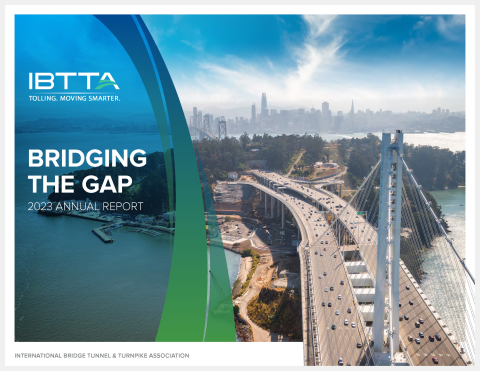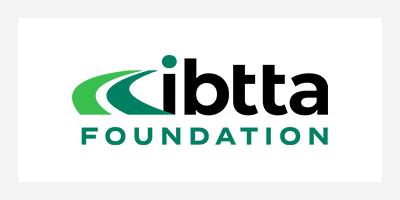- Home
- Tolling Is 'More Driver Than Passenger' As Mobility's Future Emerges
Stories
Tolling is 'More Driver than Passenger' as Mobility's Future Emerges


It’s a good thing the global tolling industry was already onboard with massive, rapid technology innovation by the time the latest waves of disruption began washing over the global transportation sector.
Visit any industry news site, pick up any print publication, or drop by any IBTTA conference over the last two to five years, and you’ll find a single, cross-cutting theme at every turn: the pace of technological change is accelerating. Actually, the pace at which that acceleration is happening…is accelerating.
The benefits are powerful: from managed lane technologies that save commuters’ time, to emergency response and wrong-way entrance alert systems that save their lives, to Connected and Autonomous Vehicle (CAV) and Mobility as a Service (MaaS) options that will transform the way we all live.
Keeping up with that change—embracing and channeling it, rather than being driven by it—is a challenge for transportation professionals around the world. Thankfully, change is already a part of the DNA of an industry that has largely completed the mammoth transition from cash-based to all-electronic tolling systems by the time today’s round of transformation got under way.
“Anyone who works closely with technology understands that the only way to keep up is to stay ahead,” says IBTTA Executive Director and CEO Pat Jones. “That’s doubly true in tolling, where technology has driven every major innovation we’ve seen for as long as anyone on our board can remember—whether it’s been on the roadway, in the back office, or in the executive suite.”
The Future is Happening Now
IBTTA President Chris Tomlinson, Executive Director of Georgia’s State Road and Tollway Authority (SRTA), the Georgia Regional Transportation Authority (GRTA) and Interim Executive Director of the Atlanta-region Transit Link Authority (the ATL), chose Driving the Future of Mobility as his theme for this year. He says that future begins with a new, much broader vision of the tolling industry’s role and mission.
“I like to remind people that we’re not tolling for the sake of tolling,” he says. “Either we’re doing this to help finance transportation projects or other infrastructure, or we’re doing it to manage demand and help move people through a corridor more quickly or reliably. But there’s always a reason for it. Tolling is a mechanism, and all of those reasons add up to mobility — trying to get people from where they are to where they want or need to be.”
With new roadway technologies converging before our very eyes, Tomlinson says it’s paramount for tolling agencies to “figure out how we bring our expertise to help the greater transportation sector of which we’re a critical part.”
More Driver Than Passenger
Tolling agencies typically project traffic and revenue 20 to 30 years out, but now those calculations must take autonomous vehicles and the sharing economy into account, Tomlinson says. So far, there are multiple, conflicting views on whether fundamental changes across the system will boost demand or drive it down.
Faced with such a monumental uncertainty, the natural course of action for tolling is to get ahead of the trend.
“I really don’t think it’s in our industry’s DNA to wait and see,” Tomlinson says. “We’ve had to innovate to do all-electronic tolling, and to toll under very adverse conditions. Our new ‘why’ has to do with how all these changes in the transportation sector will affect tolling. We’ll want to be more in the role of the driver, helping to steer the conversation and actively participating, and less in the role of the passenger, waiting and seeing which way the winds of change blow us.”
With the pace of change accelerating, he adds, “we have to be pro-active about being engaged and having a say in our own destiny.” That’s one reason Tomlinson created IBTTA’s new Emerging Technologies Committee—with a structure that is flexible enough to accommodate the unknowns as well as the knowns on the industry’s immediate horizon.
“The committee is set up as a forum to explore and discuss all of these different trends and see where they overlap,” he explains. “We didn’t want to get on the road of saying, ‘let’s create an e-scooter committee and a shared services committee and a Blockchain committee. We wanted to be able to spot the trends, distinguish them from the fads,” and crucially, discover how they interact and where they’ll matter most—on the tolled facilities where the rubber literally hits the road.”
The association’s Council of Platinum Sponsors, which serves in an advisory capacity to IBTTA’s Board of Directors, has been making its contribution, as well, with working groups focusing on Mobility as a Service and cybersecurity.
It’s (Still) All About the Customer
If there’s one consistent, unchanging factor in the transportation and tolling mix, Tomlinson says it’s the customer.
“At the end of the line there is a customer, a commuter, a motorist. There’s a person trying to deliver some results,” he says. “So when we look at new technologies, we need to be careful to never forget the end user or consumer for these services. As long as we keep them in mind, they’ll always provide us with the proper compass and indicator of success.”
Through that lens, he places tolling squarely at the center of the multi-modal transportation system customers need and expect.
“We are part of the fabric of a transportation system that relies heavily on technology,” he says. “And in this day and age, with technology driving changes across our sector, I believe our industry’s experience with being nimble and embracing new possibilities will help us serve the greater community of customers and partner agencies.”

Joining IBTTA connects you to a global community of transportation professionals, offering unmatched opportunities for networking, knowledge-sharing, and collaborative innovation in the tolling and transportation sector.
Follow IBTTA on social media for real-time updates on transportation trends and collaborative opportunities.





